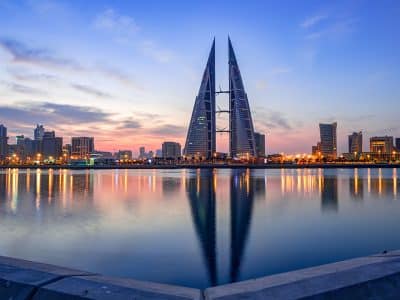The Gulf Cooperation Council (GCC) is set to strengthen its position as a global trade hub, with significant growth across key trading corridors. This will lead to a 5.5 per cent annual growth through 2033, compared to a 2.9 per cent CAGR for global trade.
In an analytical report of economic data from more than 150 countries titled “Great Powers, Geopolitics, and the Future of Trade”, BCG revealed a robust outlook for GCC trade, with total trade volume set to reach $2.3tn by 2033.
Global trade patterns are transforming significantly as new economic corridors emerge and traditional relationships evolve. The report highlighted that the GCC region will play an increasingly pivotal role in connecting major trade routes between East and West.
GCC trade
The growth is supported by significant expansion across multiple trade corridors, with China emerging as the largest growth market at USD88 billion (5.7 per cent CAGR), followed by Japan at $46bn (9.4 per cent CAGR). It also pegged GCC’s non-hydrocarbon trade growth at 3.5 per cent annually, which reflects the region’s successful economic diversification efforts.
As global trade patterns shift, the GCC strengthens its position as a critical connector between East and West. China’s trade with the Global South is set to increase by $1.25tn and trade between developing nations is projected to grow by $673bn through 2033.
The GCC’s strategic location and expanding infrastructure position the region to capture value from these evolving trade dynamics.
Rami Rafih, Managing Director and Partner at BCG, said: “The reconfiguration of global trade flows presents a pivotal moment for the GCC.
“As trade routes transform, the region isn’t just a geographic intermediary but a central orchestrator of new patterns. The GCC’s deliberate investment in capabilities positions it to achieve greater success through developing proactive and risk-based options rather than defaulting to reactionary responses.
“The key is leveraging this foundation to shape emerging trade corridors, particularly as Global South commerce evolves.”
The report identifies major transformations across key trading regions that will reshape global commerce.
While North America solidifies as a resilient trade bloc with US-Mexico trade increasing by $315bn by 2033, ASEAN emerges as a significant beneficiary of global shifts with 3.7 per cent annual trade growth.
India’s trajectory is particularly notable, with total trade expected to reach $1.8tn annually by 2033, driven by its increasing role as a global manufacturing hub.
The growing power of the Global South represents one of the biggest developments in global trade. Representing 18 per cent of global GDP and 62 per cent of the world’s population, these 133 developing nations are set to expand their trade significantly.
Annual trade among Global South nations will grow by $673bn over the next decade, while trade between the Global South and developed economies is projected to reach $1.67tn.
To navigate these shifting trade dynamics and capitalise on emerging opportunities, BCG’s report has outlined some key imperatives for business leaders in the region…
- Develop resilient and transparent supply chains by diversifying sourcing strategies and deepening relationships with key suppliers across emerging trade corridors
- Build geopolitical capabilities to better anticipate and respond to changing trade dynamics, particularly in rapidly evolving markets across Asia and Africa
- Expand presence in growth markets, focusing on opportunities in India, China, and other emerging economies where GCC trade is projected to grow significantly
- Embrace smart nearshoring strategies that leverage the GCC’s strategic position between East and West trade routes
- Invest in regional differentiation as global trade fragments, adapting operations and technology to serve diverse market requirements








